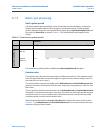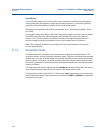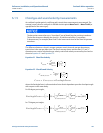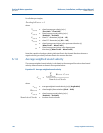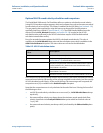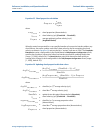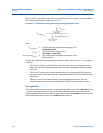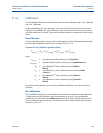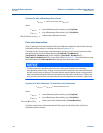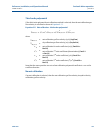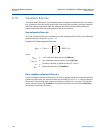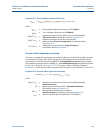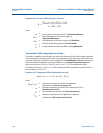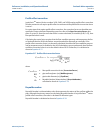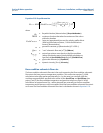
Reference, Installation, and Operations Manual Section 6: Meter operation
3-9000-743 Rev S June 2013
Calibration 193
6.1.8 Calibration
The Daniel Mark III Ultrasonic Gas Flow Meter meter uses two calibration steps: “dry” calibration
and “wet” calibration.
In this methodology, the “dry-calibration” values are set by Daniel at the factory and are not
expected to be modified; the “wet-calibration” values are expected to be set as the result of a
user flow calibration (if desired). These two calibration methods are explained in further detail
below.
Dry calibration
The dry-calibration gas flow velocity is the result of applying a third-order polynomial equation
to the average weighted gas flow velocity as shown in Equation 6-8.
Equation 6-8 Dry-calibration gas flow velocity
where
Note that the meter provides two sets of dry calibration coefficients - one set for each flow
direction.
Wet Calibration
The Daniel Mark III Ultrasonic Gas Flow Meter meter offers three selections for wet calibration:
12-point piece-wise linearization, a third-order polynomial, or none. The wet calibration
method to use is selected via the CalMethod data point with “None” being the default value.
The wet calibration gas flow velocity is calculated from the dry calibration gas flow velocity as
shown in Equation 6-9.
=
dry-calibration gas flow velocity (m/s) (DryCalVel)
=
average weighted gas flow velocity (m/s) (AvgWtdFlowVel)
=
dry-calibration 0
th
order coefficient (m/s) (FwdA0 or
RevA0)
=
dry-calibration 1
st
order coefficient (dimensionless) (FwdA1
or RevA1)
=
dry-calibration 2
nd
order coefficient (s/m) (FwdA2 or
RevA2)
=
dry-calibration 3
rd
order coefficient (s
2
/m
2
) (FwdA3 or
RevA3)
V
DryCal
A
0
A
1
V+
AvgWtd
A
2
V
AvgWtd
2
A
3
V
AvgWtd
3
++=
V
DryCal
V
AvgWtd
A
0
A
1
A
2
A
3



